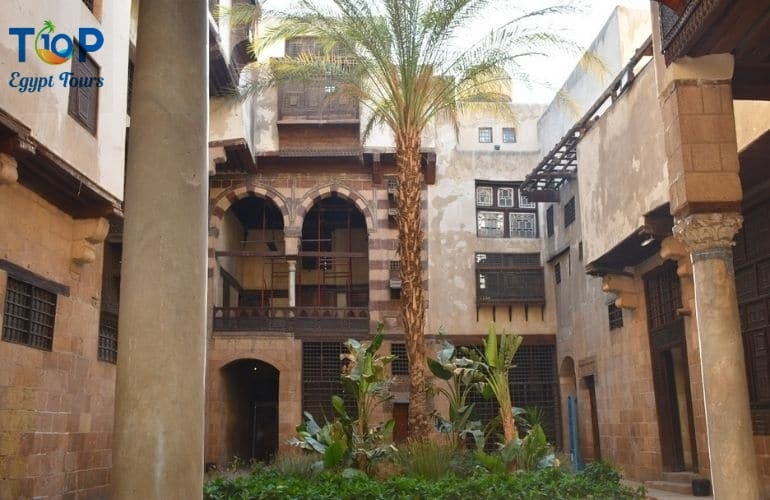House of Suhaymi, stands as a captivating example of traditional Egyptian architecture and design. Located in the heart of Cairo’s historic district, this preserved 17th-century house offers visitors a glimpse into the lifestyle, culture, and architectural heritage of the Ottoman era in Egypt. This article explores the significance of Bayt Al-Suhaymi, highlighting its historical context, architectural features, and the unique insights it provides into the daily life of the Egyptian elite.
In this article, we will uncover for you the House of Suhaymi with Top Ten Egypt.
Historical Context Of the House of Suhaymi:
This section provides an overview of the historical context surrounding Bayt Al-Suhaymi. It delves into the era of Ottoman rule in Egypt, discussing the influence of this period on architecture, culture, and society. It also explores the role of Bayt Al-Suhaymi as a symbol of the affluent lifestyle of the Egyptian elite during the Ottoman era.
Architecture and Design: A Timeless Oasis
Bayt Al-Suhaymi’s architecture and design reflect the intricate details and elegance of traditional Egyptian houses. This section explores the layout, spatial organization, and architectural elements of the house, including the central courtyard, mashrabiya screens, and ornate wooden carvings. It highlights the fusion of Ottoman and Islamic architectural styles that give the house its unique charm.
Interior Decor and Furnishings: A Journey into Ottoman-Era Luxury
The interiors of Bayt Al-Suhaymi are adorned with exquisite décor and furnishings, capturing the opulence and refined taste of the Egyptian elite. This section explores the intricate details of the house’s interiors, including the beautifully painted ceilings, elaborate tilework, and traditional furniture. It provides insights into the luxurious lifestyle and cultural preferences of the inhabitants during the Ottoman era.
Courtyard and Gardens: Serenity in the Heart of Cairo
The central courtyard and gardens of House of Suhaymi offer a tranquil retreat from the bustling streets of Cairo. This section discusses the significance of the courtyard as the heart of the house, its function as a gathering space, and its architectural features such as the fountain and shaded seating areas. It also explores the gardens surrounding the house, showcasing the harmonious blend of nature and architecture.
Cultural Significance: Preserving Egypt’s Architectural Heritage
Bayt Al-Suhaymi serves as a cultural landmark, preserving Egypt’s rich architectural heritage. This section highlights the role of the house in promoting cultural awareness, educating visitors about traditional Egyptian architecture, and fostering a sense of pride and connection to the country’s historical legacy.
Visitor Experience: Stepping into the Past
Visiting the House of Suhaymi offers a unique experience of immersing oneself in the ambiance and elegance of the Ottoman era. This section provides practical information for visitors, including details on guided tours, interactive exhibits, and the opportunity to learn about the house’s history and cultural significance.
Conclusion:
House of Suhaymi stands as a testament to the architectural splendor and cultural heritage of Ottoman-era Egypt. Through its well-preserved architecture, detailed interiors, and serene courtyard, the house offers visitors a captivating journey into the past. As visitors explore Bayt Al-Suhaymi, they gain a deeper appreciation for the rich history, architectural traditions, and timeless beauty of Egyptian culture.



Comment (0)